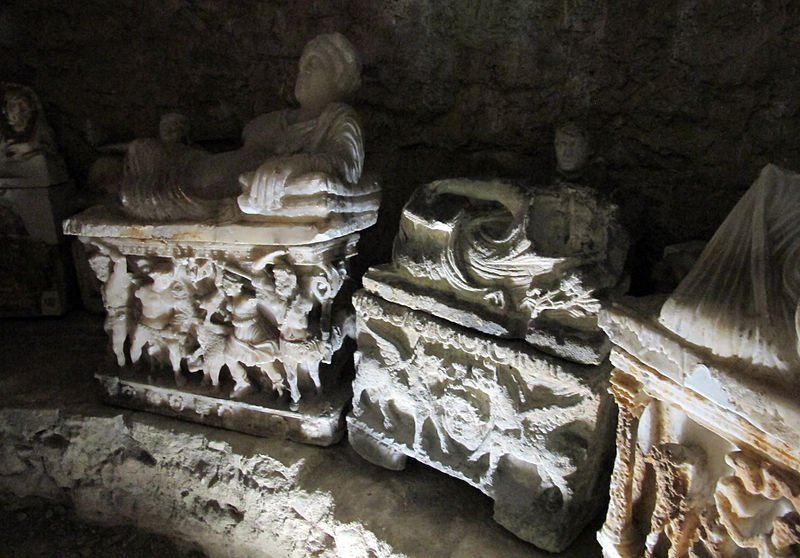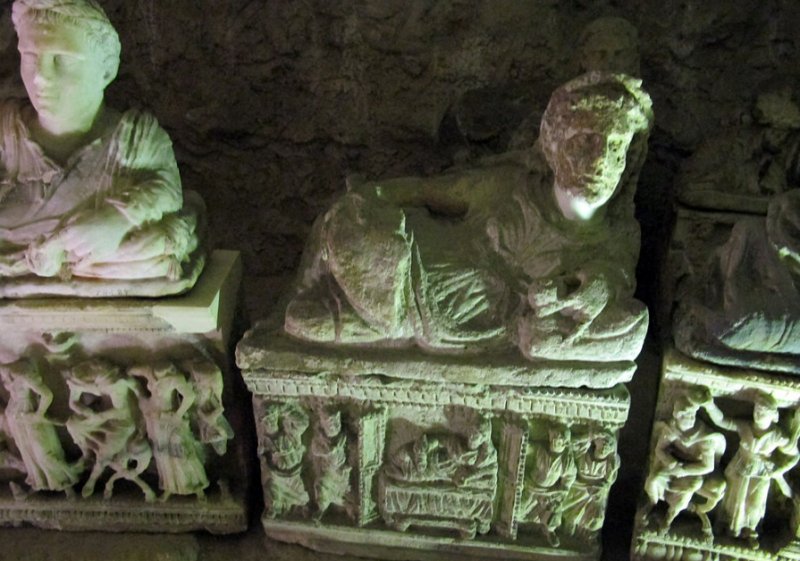Inghirami Tomb – Spectacular Etruscan Burial With 53 Alabaster Urns In Ancient City Of Volterra, Italy
A. Sutherland - AncientPages.com - Many secrets of the ancient Etruscans, who represent one of the most enigmatic civilizations in Europe, are still to be discovered.
Etruscan cemeteries contain different burial practices dated from the 9th to the 1st century BC and bear witness to the achievements of Etruscan culture, which, over nine centuries, developed the earliest urban civilization in the northern Mediterranean.
Inghirami Tomb in ancient Ccity of Volterra, Italy. Image credit: Sailko - CC BY-SA 3.0
Some tombs are monumental, cut in the rock, and decorated by impressive tumuli (burial mounds) and carvings. In contrast, others have wall paintings that successfully survived until now. However, many Etruscan tombs have been looted over the centuries.
Among those still preserved is the Inghirami Tomb, which belonged to the Atia family and is one of the most impressive tombs from the Etruscans' Ulimeto necropolis.
It contained fifty-three urns dating from the first half of the second to the middle of the first century.
The 'Inghirami Tomb' is considered one of the best-known late Etruscan tomb complexes. Two Inghirami brothers discovered it and visited the Ulimeto necropolis outside Volterra, Italy, in 1861.
Etruscan City Of Volterra
A ring of defensive walls surrounds Volterra, an ancient fortress city with Etruscan roots, built by the Medici family in 1474 on the remains of older fortresses. The construction appeared two years after the city of Florence had conquered Volterra after a brutal war over the control of the alum mines.
Closed within mighty old walls and situated on a hill 545 meters above sea level, Volterra is far from the sea and the urban settlements. Over the centuries, it was the city's most favorable strategic position. However, the massive fortress ("Fortezza dei Medici") was not built to protect the area but to subjugate the whole community and discourage rebellion.
However, although the city was closed within its walls, it was repeatedly captured but maintained some independence until the Romans finally conquered it.
Thanks to rich history and culture, Volterra could preserve several monuments, including the 'Inghirami Tomb.' The two young brothers accidentally found the structure outside Volterra's wall circle, where they went to spend their holiday.
Beneath a grassy mound, the boys discovered a subterranean structure - a tomb constructed of a circular chamber roughly hewn in the bedrock, without any decorations, and enclosed by a false dome supported by a central pillar. An entrance passage leads to the room, cut into the tufa rock.
Inside the tomb's chamber are fifty-three spectacular, beautiful cinerary alabaster urns and round central pillars supporting the ceiling, all made from local alabaster stone. The tomb chamber was filled with sixty chests from five-six generations, placed in two rows on the bench and in front of the central pillar.
Inghirami Tomb - Volterra, Italy. Image credit: Sailko - CC BY-SA 3.0
Traditionally, the primary function of the urns was to hold a person's ashes after cremation. This funeral tradition was popular among both classical and prehistoric cultures. The structure represents a characteristic Volterran tomb dated to the 4th-1st century BC. Relief decorations and the reclining lid figures representing the deceased create an illusion of a banquet hall. However, these sculptural decorations were not intended to be public manifestations.
The Inghirami Tomb allows us to admire something from the distant past because there are not many valuable places to see. Almost all the Etruscan tombs were looted in antiquity a long time ago.
The Etruscan urns lack Latin inscriptions typically found on the ones dated to Roman times. Today, the jars that belonged to an Etruscan Volterranian family Ati (Atia), are stored in Florence, Italy. ¨
After the reconstruction, the tomb is now in the garden of the National Archaeological Museum of Florence.
Written by – A. Sutherland - AncientPages.com Senior Staff Writer
Updated on March 07, 2023
Copyright © AncientPages.com All rights reserved. This material may not be published, broadcast, rewritten or redistributed in whole or part without the express written permission of AncientPages.com
Expand for referencesReferences:
MacIntosh Turfa J, The Etruscan World
National Archaeological Museum of Florence
Haynes Sybille, Etruscan Civilization: A Cultural History
Banti, Etruscan Cities and Their Culture
More From Ancient Pages
-
 Secrets Of An Unusual And Mysterious Medieval Danish Axe Revealed By Scientist
Archaeology | Nov 25, 2022
Secrets Of An Unusual And Mysterious Medieval Danish Axe Revealed By Scientist
Archaeology | Nov 25, 2022 -
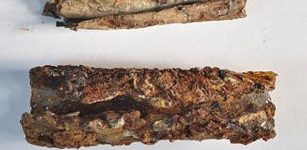 CT Scanning And 3D-Modelling Used To ‘Unfold’ Ancient Silver Plate Found In Jerash
Archaeology | Dec 26, 2015
CT Scanning And 3D-Modelling Used To ‘Unfold’ Ancient Silver Plate Found In Jerash
Archaeology | Dec 26, 2015 -
 Daedalus And Icarus Who Forever Remained An Example For Many Dreamers
Featured Stories | Sep 11, 2023
Daedalus And Icarus Who Forever Remained An Example For Many Dreamers
Featured Stories | Sep 11, 2023 -
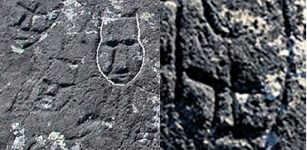 Dorset Culture: Mysterious Rock Carvings Of Qajartalik – Faces Of Unknown Beings
Civilizations | Sep 3, 2018
Dorset Culture: Mysterious Rock Carvings Of Qajartalik – Faces Of Unknown Beings
Civilizations | Sep 3, 2018 -
 3,800-Year-Old Cuneiform Clay Tablet With Agreement To Purchase A City Discovered In An Ancient Tumulus In Turkey
Archaeology | Aug 11, 2023
3,800-Year-Old Cuneiform Clay Tablet With Agreement To Purchase A City Discovered In An Ancient Tumulus In Turkey
Archaeology | Aug 11, 2023 -
 Sed Festival – Ancient Egyptian Ritual Tested Pharaohs
Ancient History Facts | Mar 28, 2018
Sed Festival – Ancient Egyptian Ritual Tested Pharaohs
Ancient History Facts | Mar 28, 2018 -
 Evidence Ravens Share A 30,000-Year-Old Relationship With Humans
Archaeology | Jul 14, 2023
Evidence Ravens Share A 30,000-Year-Old Relationship With Humans
Archaeology | Jul 14, 2023 -
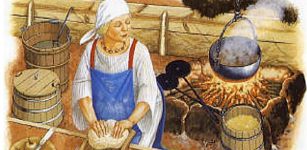 Cooking Gear Found In Graves Of Viking Men And Women
Archaeology | Jun 27, 2019
Cooking Gear Found In Graves Of Viking Men And Women
Archaeology | Jun 27, 2019 -
 Jizo – Protector Of Children, Travelers And Women In Japanese Mythology
Featured Stories | Dec 23, 2015
Jizo – Protector Of Children, Travelers And Women In Japanese Mythology
Featured Stories | Dec 23, 2015 -
 Aztecs: Facts And History About The Ancient And Powerful Mesoamerican Civilization From Aztlán
Civilizations | Apr 10, 2017
Aztecs: Facts And History About The Ancient And Powerful Mesoamerican Civilization From Aztlán
Civilizations | Apr 10, 2017 -
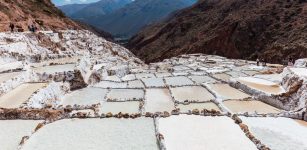 Astonishing Pre-Inca Salt Ponds of Maras In Peru Were Created By The Chanapata Culture
Civilizations | Sep 14, 2016
Astonishing Pre-Inca Salt Ponds of Maras In Peru Were Created By The Chanapata Culture
Civilizations | Sep 14, 2016 -
 Who Was The Sapa Inca?
Ancient History Facts | Jan 27, 2016
Who Was The Sapa Inca?
Ancient History Facts | Jan 27, 2016 -
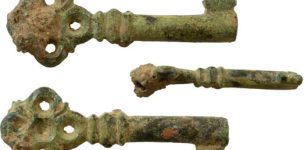 Intriguing Beautiful Medieval Key Discovered In Claverham Village, UK
Artifacts | Oct 10, 2023
Intriguing Beautiful Medieval Key Discovered In Claverham Village, UK
Artifacts | Oct 10, 2023 -
 Louhi – Witch Goddess Of The North And The Magical Artifact Sampo In Finnish Mythology
Featured Stories | Sep 21, 2017
Louhi – Witch Goddess Of The North And The Magical Artifact Sampo In Finnish Mythology
Featured Stories | Sep 21, 2017 -
 On This Day In History: Anne Boleyn, The Second Wife Of Henry VIII – Beheaded For Adultery, Treason And Incest – On May 19, 1536
News | May 19, 2016
On This Day In History: Anne Boleyn, The Second Wife Of Henry VIII – Beheaded For Adultery, Treason And Incest – On May 19, 1536
News | May 19, 2016 -
 New Clues Why Neanderthals Visited La Cotte de St Brelade In Jersey 250,000 Years Ago
Archaeology | Jun 18, 2023
New Clues Why Neanderthals Visited La Cotte de St Brelade In Jersey 250,000 Years Ago
Archaeology | Jun 18, 2023 -
 Startling Evidence Modern Humans Lived In The Mandrin Cave 56,800 Years Ago Where They Met The Neanderthals
Archaeology | Mar 12, 2022
Startling Evidence Modern Humans Lived In The Mandrin Cave 56,800 Years Ago Where They Met The Neanderthals
Archaeology | Mar 12, 2022 -
 Unraveling The Mystery Of The Celestial Matrix
Featured Stories | Sep 30, 2021
Unraveling The Mystery Of The Celestial Matrix
Featured Stories | Sep 30, 2021 -
 Vikings’ Unicorn Bluff Fooled Europeans For Hundreds Of Years
Ancient History Facts | Apr 24, 2018
Vikings’ Unicorn Bluff Fooled Europeans For Hundreds Of Years
Ancient History Facts | Apr 24, 2018 -
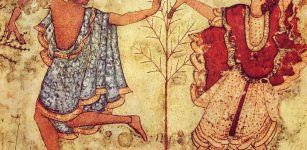 Ancient Dance And Games Offer Glimpses Of Life And Death In Italy 2,500 Years Ago
Archaeology | Mar 24, 2023
Ancient Dance And Games Offer Glimpses Of Life And Death In Italy 2,500 Years Ago
Archaeology | Mar 24, 2023


